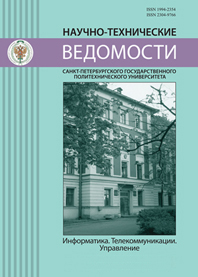|
Circuits and Systems for Receiving, Transmitting and Signal Processing
Using conceptual models of numerical electrodynamical methods for analyzing the characteristics of vibrators in infinite dissipative media
R. Yu. Borodulin
S. M. Budyonny Military Academy of Communications
Abstract:
The article presents the results of a study on the refined properties of vibrators of different electrical lengths placed in a homogeneous dissipative medium (medium with losses), depending on the parameters of these media. Advanced numerical methods of ‘full-field’ electrodynamics, such as the method of moments, the finite element method and the finite-difference time-domain method were used for the first time for finding the current distribution and the current phase of vibrators. The developed conceptual models of dipole antennas immersed in endless dissipative environment are suitable for numerical simulation in known software packages, or for proprietary algorithms. The current and the current phase distributions along the surface of vibrators found by using these models are compared with the experimentally measured ones.
We have described the techniques and the сalculation results for finding the current area, the effective length of vibrators, their effective area and the impedance using a variety of methods. We have reached practical conclusions on the properties of submerged vibrators. We have performed a correct analysis of the numerical methods used. The results presented in the article can be used for finding the elecrical characteristics of antennas of arbitrary shape, including those placed in a dissipative medium, by modern numerical methods.
Keywords:
dissipative medium, method of moments, finite element method, finite-difference time-domain method, the conceptual model, the current distribution, the phase distribution of the current density surface current, effective length, effective area.
Citation:
R. Yu. Borodulin, “Using conceptual models of numerical electrodynamical methods for analyzing the characteristics of vibrators in infinite dissipative media”, St. Petersburg Polytechnical University Journal. Computer Science. Telecommunication and Control Sys, 2016, no. 4(252), 29–42
Linking options:
https://www.mathnet.ru/eng/ntitu163 https://www.mathnet.ru/eng/ntitu/y2016/i4/p29
|

| Statistics & downloads: |
| Abstract page: | 94 | | Full-text PDF : | 67 |
|




 Contact us:
Contact us: Terms of Use
Terms of Use
 Registration to the website
Registration to the website Logotypes
Logotypes








 Citation in format
Citation in format 